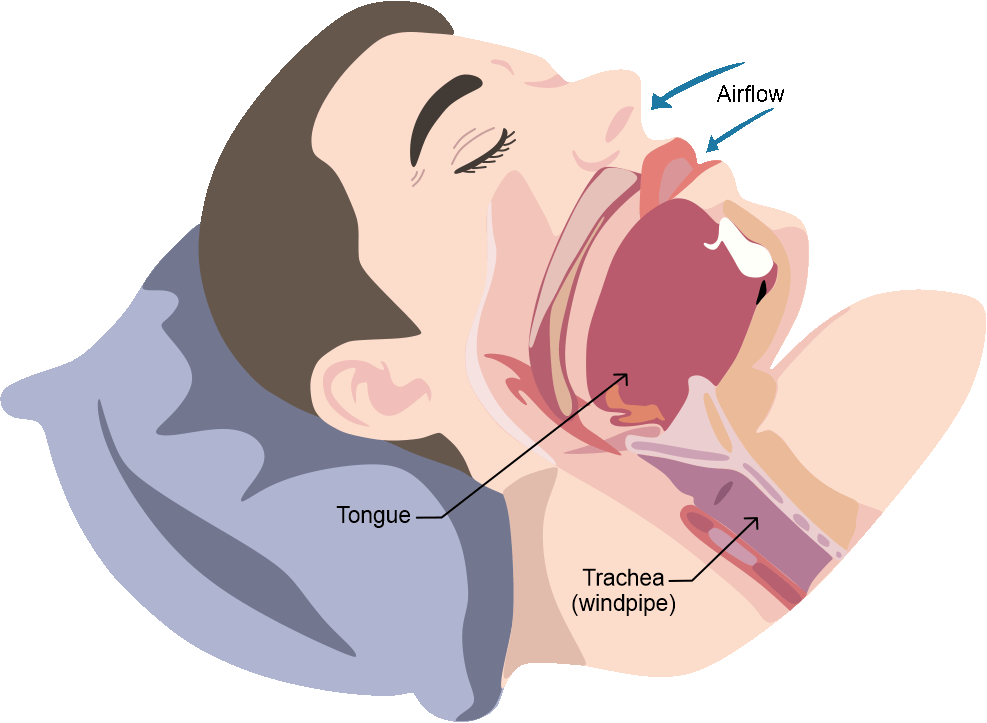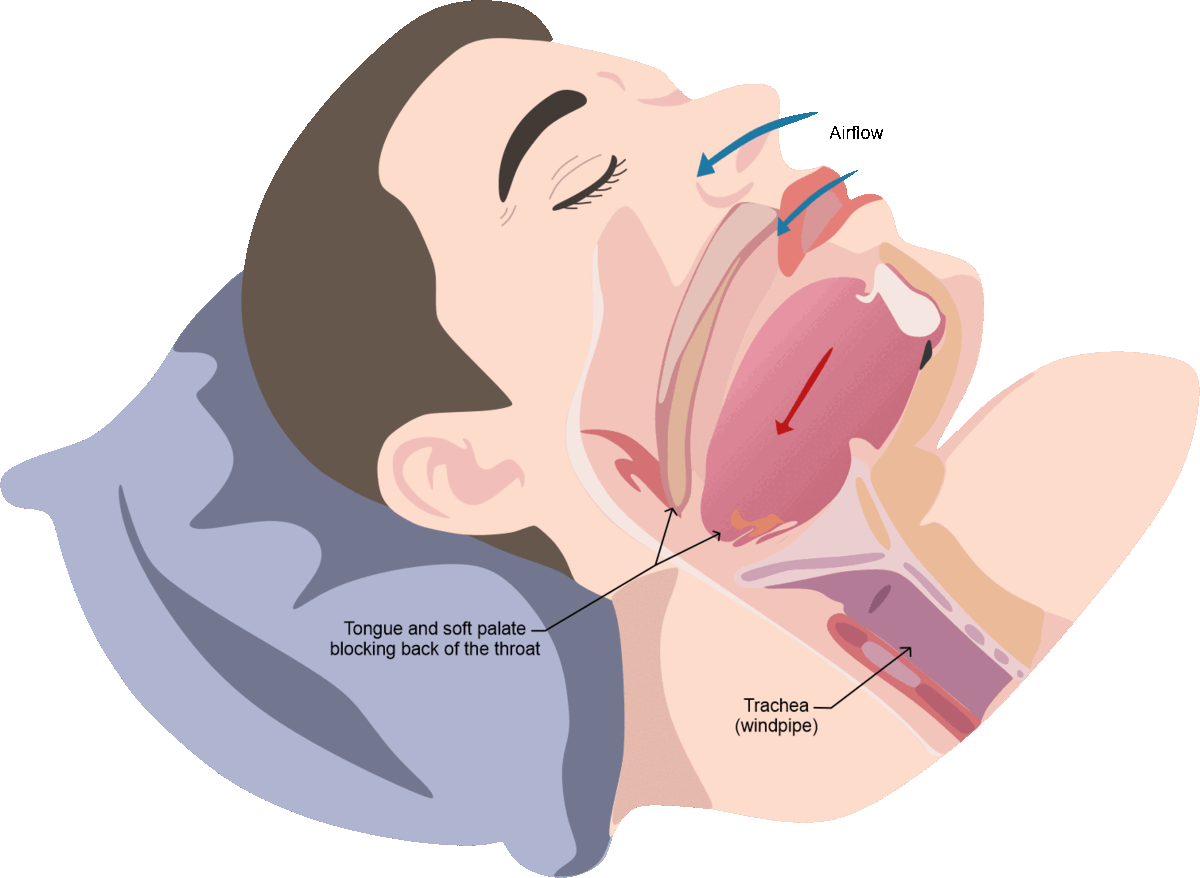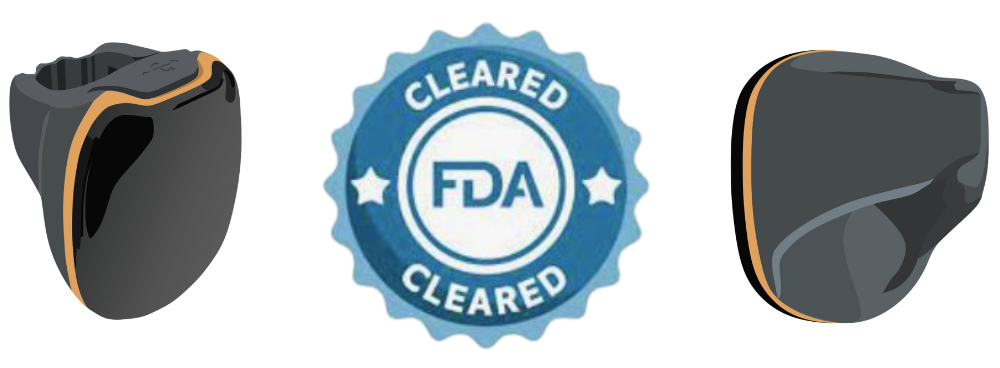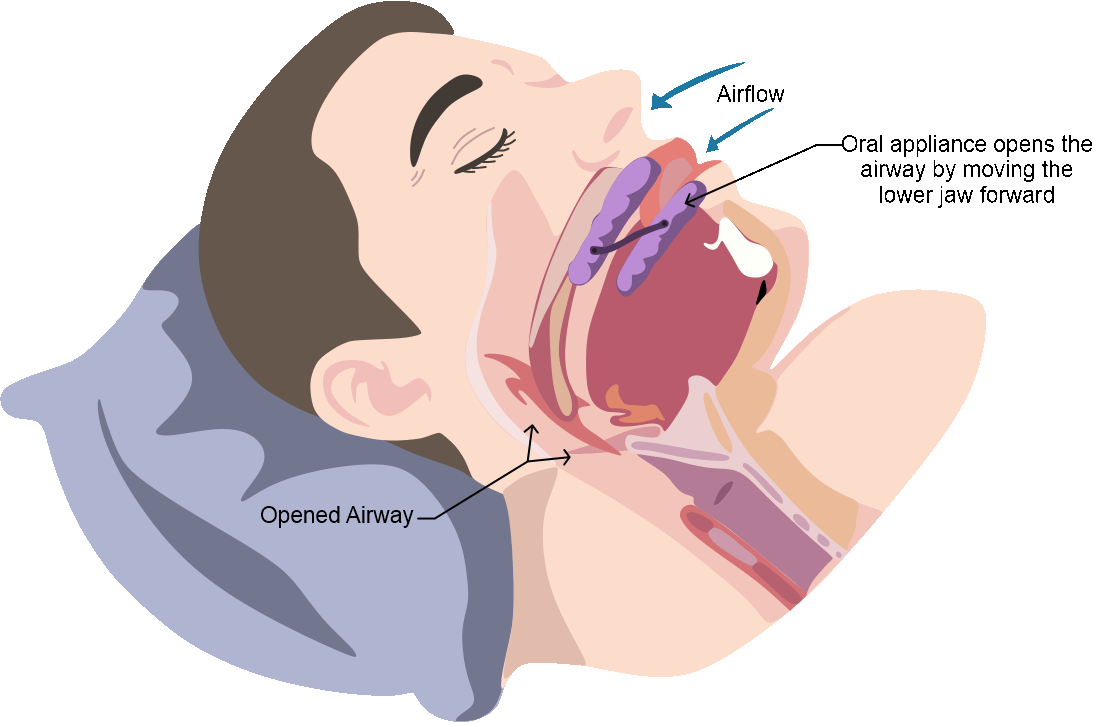Oral Appliance Therapy for Sleep Apnea
Oral Appliance Therapy for Sleep Apnea
Individuals suffering with obstructive sleep apnea frequently assume they’re confined to a sole solution: CPAP. If you’re averse to enduring the inconveniences of CPAP or surgical implants during your sleep, exploring the Vivos Oral Appliance could be a viable option. Our skilled dentists are trained to provide a snoring and sleep apnea device that holds the potential to rectify your sleep pattern and alleviate effects associated with the serious condition of sleep apnea.

OVERVIEW
What is Obstructive Sleep Apnea?

Loud and persistent snoring is often the first sign that a person has sleep apnea, a potentially serious sleep disorder in which breathing repeatedly stops and starts. If you have sleep apnea, you’re more likely to have high blood pressure and suffer from heart disease. There are two types of sleep apnea: central and obstructive. Obstructive sleep apnea is the most common type of sleep apnea.
Obstructive sleep apnea occurs when the muscles in the back of your throat relax too much, and your airway narrows or closes as you breathe in. Your airway may collapse or become blocked several times an hour. Each time you stop breathing, your body is briefly deprived of oxygen. The pauses in breathing may last only a few seconds. Or they may persist for minutes.
Sleep apnea often goes undiagnosed because people who have it don’t realize they’re stopping and starting their breathing during the night. A family member or bed partner may be the first to notice the problem. If you’re told you snore loudly and feel tired during the day, you must consult your dentist or sleep doctor to determine if you may have obstructive sleep apnea.

Risk Factors for Obstructive Sleep Apnea

Obstructive sleep apnea affects 25% of all men and 10% of all women at some point. Several factors can increase your risk of developing obstructive sleep apnea. Some of these are modifiable, while others are not. The most common risk factor for OSA is excess weight. This is because fat deposits around the neck can narrow the airway. Losing weight can reduce the severity of sleep apnea.
The following are some of the other risk factors for obstructive sleep apnea:
- Being male
- Being overweight or obese
- Having a neck circumference of 17 inches or greater
- Having large tonsils, a large tongue, or a small jaw bone
- Having a family history of sleep apnea
- Smoking
- Drinking alcohol
- Use of sedatives or tranquilizers
- Taking a sedating medication, such as a narcotic pain medication
- Having systemic diseases, such as heart failure, stroke, and kidney failure

The Root Cause of Obstructive Sleep Apnea
Obstructive sleep apnea is caused by a blockage of the airway because of the tongue, the soft palate, or the side walls of the throat. When the airway is blocked, it prevents air from flowing into the lungs, leading to snoring and difficulty breathing. In some cases, you may stop breathing altogether. The chest muscles and diaphragm work hard to open up the airway again. This leads to a loud gasp and body jerk as your breathing resumes.
Symptoms of Obstructive Sleep Apnea in Adults:
- Snoring
- Gasping or choking during sleep
- Pauses in breathing during sleep
- Waking up abruptly during the night
- Dry mouth or sore throat upon waking
- Excessive daytime sleepiness
- Morning headaches
- Difficulty concentrating or focusing during the day
- Irritability
- Mood swings
- Sexual dysfunction
The most common symptom of obstructive sleep apnea is loud snoring. However, sleep apnea symptoms are often observed by sleeping partners, friends, or family members before they’re identified by the individual.
Symptoms of Obstructive Sleep Apnea in Children:
- Pauses in breathing during sleep
- Waking up frequently during the night
- Mouth breathing during the day
- Hyperactivity
- Problems paying attention
- Behavioral problems
- Sweating at night
- Nighttime awake periods
- Bedwetting
- Sleepiness during the day
- Poor school performance
The symptoms of obstructive sleep apnea in children are usually less obvious. Some children may have one or two symptoms, while others may have several. You must contact your doctor if you notice the aforementioned sleep apnea symptoms.
Long-Term Effects of Obstructive Sleep Apnea:
- High blood pressure
- Heart disease
- Heart attack
- Stroke
- Diabetes
- Depression
- Arrhythmias
- Hypertension
- Cardiomyopathy
- Congestive heart failure
- Job impairment
- Work-related accidents
- Academic underachievement in children

PROCEDURE DETAILS
Easy Home Sleep Study with the FDA Cleared SleepImage Ring Device

The most common method for diagnosing obstructive sleep apnea is through a home sleep test. This straightforward and non-invasive test can be comfortably conducted in your own residence. During the home sleep test, you’ll wear a compact FDA Cleared SleepImage Ring device on your finger. This device will monitor your heart rate, oxygen levels, and breathing.
Throughout the test, you’ll be requested to sleep for a minimum of six to eight hours each night, spanning 2 to 3 nights in total. The monitor will meticulously record your sleep patterns and breathing. After the test concludes, our in-house sleep physician and dentist will meticulously analyze the gathered data. Should obstructive sleep apnea be detected, your dentist will engage in a discussion about potential treatment options for snoring and obstructive sleep apnea. This might encompass the utilization of the FDA Cleared Vivos dental device.
The following are the steps involved in your home sleep study:
- Share your insurance details with us.
- We’ll conduct a complimentary insurance verification to assess your coverage.
- During your office visit, you’ll receive the SleepImage Ring device.
- Perform the overnight sleep studies in the comfort of your home and return the device upon completion.
- Our team of sleep physicians and dentists will analyze the findings and provide an official diagnosis within a few days.
- At your next visit we will discuss the results and options to help.

FDA Cleared Vivos Oral Appliance for Snoring and Obstructive Sleep Apnea

This specific form of Oral Appliance Therapy (OAT) offers a compassionate solution for those dealing with mild to moderate obstructive sleep apnea (OSA). Improper jaw development can lead to a narrowed airway, causing nighttime collapse. By reshaping and expanding the oral cavity, we aim to widen the airway, promoting better breathing and deeper sleep. Using this customized mouthpiece, this method also gently advances the jaw during sleep, preventing the tongue and soft palate from obstructing the airway. Our approach typically spans 18 months, guided by our Vivos dental professionals, who use noninvasive oral appliance technology to address dentofacial irregularities and mild-to-moderate OSA and snoring through The Vivos Method.
This approach offers a gentler alternative to CPAP therapy, with added comfort and portability for those on the go. Your well-being is our priority throughout this journey.

How to Get a Vivos Dental Device Now
Obtaining an FDA Cleared Vivos Oral Appliance generally follows a series of steps, typically initiated with a consultation with your dentist. During this consultation, your dentist will inquire about your medical history and symptoms. To begin gathering data, a simple home sleep test using the SleepImage Ring will be conducted, and our sleep physician will collaborate in establishing a diagnosis, providing a medical necessity letter tailored to your condition. Additionally, a comprehensive examination of your mouth and throat will be conducted.
Should you and your dentist decide that an oral appliance is the optimal treatment route, digital scans of your teeth will be taken. These impressions will lay the foundation for crafting a tailor-made oral appliance via our Vivos dental laboratory. Once your personalized oral appliance is prepared, you’ll revisit the dentist for a fitting for the device.

RISKS/ BENEFITS
Potential Risks of Oral Appliance Device:
- Discomfort
- Increased saliva production
- Soreness in the jaw and teeth
- Bruxism (teeth grinding)
- Throat irritation
- Irritation of the gums
- Jaw pain
- Speech difficulties
- Difficulty swallowing
- Dry mouth
- Temporomandibular joint (TMJ) problems
Most side effects or oral appliances for sleep apnea are temporary and mild. The discomfort should fade after a few days. If you experience persistent side effects, such as jaw pain, speech difficulties, and dry mouth, you should contact your dentist.
Benefits of Oral Appliances for Sleep Apnea:
- Effective treatment for mild to moderate OSA
- Suitable alternative to CPAP
- Suitable for people who cannot tolerate CPAP
- Nonsurgical treatment option
- Small and portable
- Comfortable and easy to use
- Easy to care for
- Comfortable to wear
- Custom-made to fit your mouth
- Covered by most insurance plans
- Improve sleep quality and reduce snoring
- Reduce daytime sleepiness and improve quality of life

FAQ`s
Sleep Apnea Oral Appliance Therapy FAQs
Can severe sleep apnea be treated with an oral appliance?
Severe sleep apnea is defined as having 30 or more episodes of apnea (when breathing is interrupted) per hour. If you have severe sleep apnea, you may still be able to use an sleep apnea oral appliance, but it may not be as effective as CPAP. Some people with severe sleep apnea use both CPAP and an sleep apnea oral appliance. Your dentist will determine if you’re a suitable candidate for oral appliance therapy.
How long does an oral appliance for sleep apnea last?
Vivos Dental Sleep Apnea Oral Devices typically consist of components crafted from soft acrylic, silicone, and titanium parts. These materials ensure a comfortable experience while wearing them, with a reduced likelihood of side effects compared to CPAP. Maintaining the cleanliness of sleep apnea oral appliances is essential, necessitating daily cleaning. Additionally, we’ll schedule regular appointments for evaluation to ensure their effectiveness. When given proper care, these devices can provide reliable service for several years.
How do I adjust my oral appliance for sleep apnea?
Check with your doctor or dental professional if you have any problems with your oral appliance sleep apnea. They can make adjustments to ensure that it is comfortable and working correctly.
How does a Vivos Dental Device for snoring and sleep apnea work?
The Vivos dental appliance works with care and precision to address the root causes of obstructive sleep apnea (OSA). This innovative device nurtures the growth of the upper and lower jaws, promoting improved facial alignment and airway expansion.
Here’s how it brings comfort and relief:
Facial Development: The Vivos appliance guides proper jaw growth, fostering a more spacious airway. This helps prevent airway collapse during sleep.
Airway Expansion: Gentle pressure on teeth stimulates upper jaw bone growth, enhancing nasal passages and airflow. This reduces the risk of obstruction.
Muscle Tone: Improved jaw alignment and airway opening lead to better muscle tone in the throat, reducing snoring and sleep apnea events.
Personalization: Each Vivos appliance is crafted to fit your unique oral structure, ensuring both comfort and effectiveness in addressing your sleep apnea.
These actions culminate in a stabilized, well-aligned airway that improves breathing during sleep and reduces sleep apnea symptoms. Your journey with Vivos involves personalized care, adjustments, and monitoring by skilled dental professionals for the best possible outcomes tailored to you.
Schedule Your Treatment for Snoring and Sleep Apnea in Houston Today
At URBN Dental, our dedication revolves around providing essential treatment for snoring and obstructive sleep apnea. If you’re grappling with potential sleep breathing issues or sleep apnea, prompt treatment is crucial. When you choose URBN Dental, we embark on a collaborative journey with you. We’ll craft a tailored treatment plan, delve into your symptoms, identify the underlying cause, and meticulously design an FDA Cleared Vivos Dental Device that perfectly suits your needs. Reach out to us today; your well-being is our priority.

